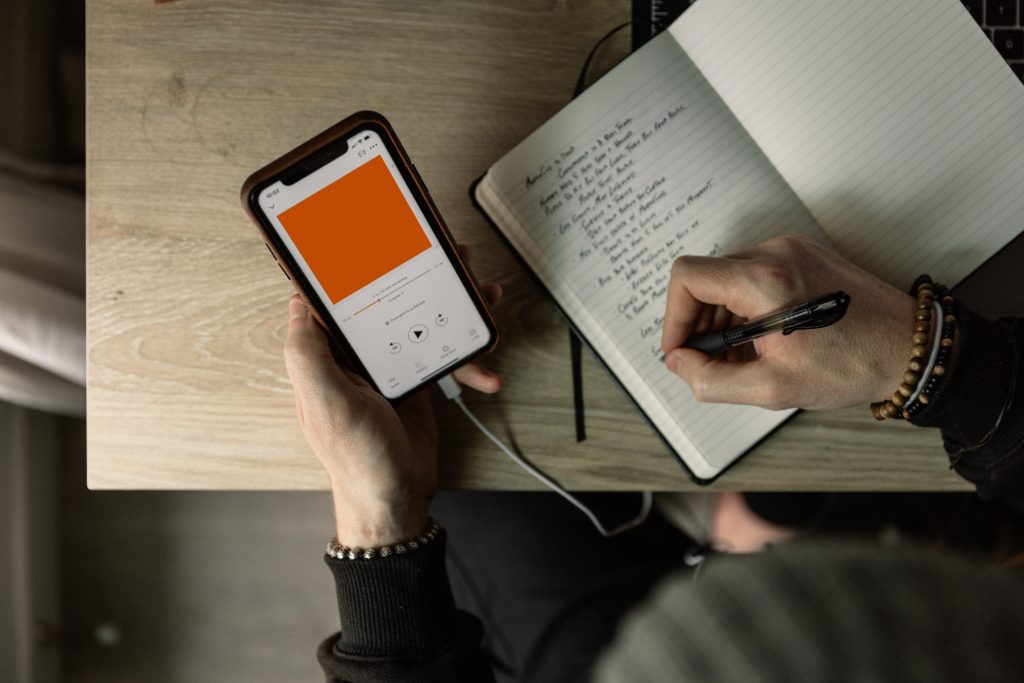Teaching Listening

The Listening module includes four recordings and around 40 questions, with increasing difficulty as the sections goes on. Students will listen for 30 minutes and have 10 minutes to transfer answers to the answer sheet if they are taking the paper-based examination. If they take the computer-based examination, then no extra time will be allowed for transferring answers. According to the IELTS official website, the four recordings usually follow this format:
- Recording 1 – a conversation between two people set in an everyday social context.
- Recording 2 - a monologue set in an everyday social context, e.g. a speech about local facilities.
- Recording 3 – a conversation between up to four people set in an educational or training context, e.g. a university tutor and a student discussing an assignment.
- Recording 4 - a monologue on an academic subject, e.g. a university lecture.
IELTS official website has also offered a sample activity for teaching Listening:
How to prepare students for the Listening module?
Among the four modules, students may always focus more on Reading, Speaking and Writing, but not Listening. Therefore, when teaching the Listening module, you can first explain the test format to them, such as the duration of the test, number of questions included for each recording and possible question types. You can also remind students to expect a range of accents, including American, Australian, British, and Canadian.
After introducing the test format, practices will be the only key for students to improve and get a satisfactory score in the test. Apart from sample test papers available online, some authentic video clips may also be suitable to serve as teaching materials. The clips from various sources will be applicable for different sections of the module.
Recording 1 - a conversation between two people set in an everyday social context
Being the easiest part of the module, recording 1 usually features two people talking in a daily situation. Therefore, movies, light news and podcasts can be good resources for training students to grab the factual information such as names, city or country names, dates and numbers. If you prefer a communicative activity, you may get your students to work in pairs and create a conversation that they then show to the class as a kind of role play. When they are acting, the rest of the class will need to listen carefully to get the necessary information. The only thing you will need to make sure is the scripts that students are acting with have included enough details, i.e., names, stress names, numbers and dates.
Recording 2 - a monologue set in an everyday social context, e.g. a speech about local facilities
In this part, students will listen to a person talking around a daily context. TED Talks offer numerous speeches on a range of topics, from daily context to technical context. Transcripts of the talks are available so students can read along when they hear. TED Talks also offer lessons based on their talks, which is accessible here. If you opt for a communicative approach, you may even get your students to read aloud passages in front of the class and the rest of them to listen for information. The passages could be some reading materials or transcripts from talks. Check this out to get some ideas for designing questions around the talks. Finally, speeches from famous figures such as Obama, Martin Luther King, and so on are also good sources to train students’ listening skills. Their speeches are available here.
Recording 3 – a conversation between up to four people set in an educational or training context, e.g. a university tutor and a student discussing an assignment
The difficulty of recording 3 is increased because of the number of speakers involved and context covered. In this part, students will listen to a group discussion of 3-4 people, probably with different accents, talking around an academic context. Thus, it will be quite challenging for you to search for relevant sources to teach the skills. Nonetheless, the Internet is the best resource. Podcasts often feature a group of four discussing around a particular topic, which would serve a good source for this part. There are a bunch of free online radios, such as TuneIn and iHeart. You may select topics that are of interest and relevance to your students so they would be more motivated to learn and practice the skills.
Recording 4 - a monologue on an academic subject, e.g. a university lecture
This is the most challenging part of the Listening module, in which students will again listen to a person speaking on an academic subject, instead of a daily situation. Therefore, online lectures from universities and colleges are the target source that you should look for. Topics covered in these lectures may be quite technical so they would be more suitable for advanced students. Here is a list of top colleges and universities that offer free online lectures:
When you are playing the clips to train students on whatever part, if the media player can allow you to adjust the playing speed (e.g., YouTube), you may try to play them at a faster speed. It is a good way to stretch students’ ability and push them out of their comfort zone. As your students get used to the faster speed, they will be very thankful when they sit for the test.
Contents adapted from:
https://manwrites.com/the-teachers-guide-to-the-ielts-listening-test/
